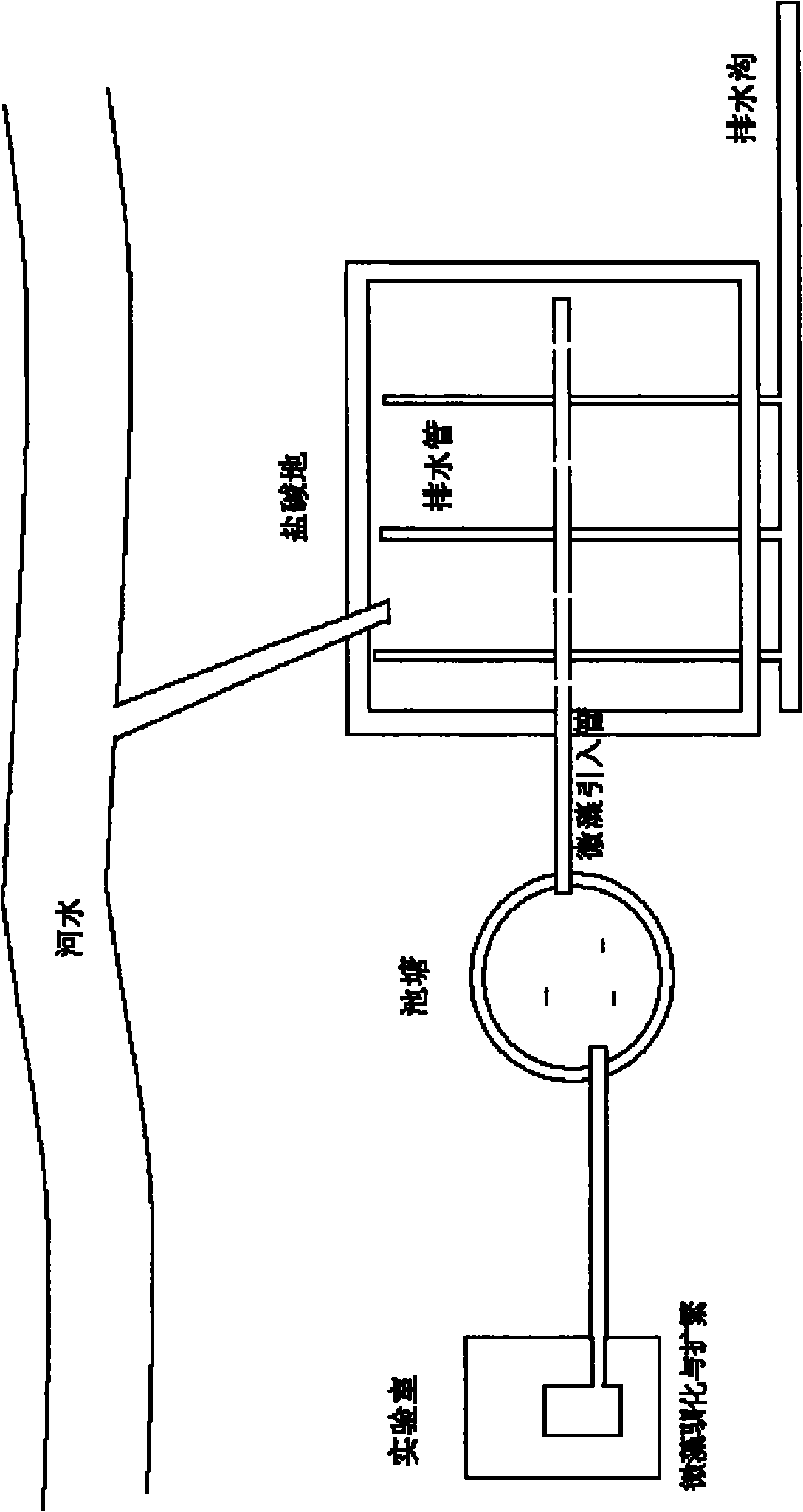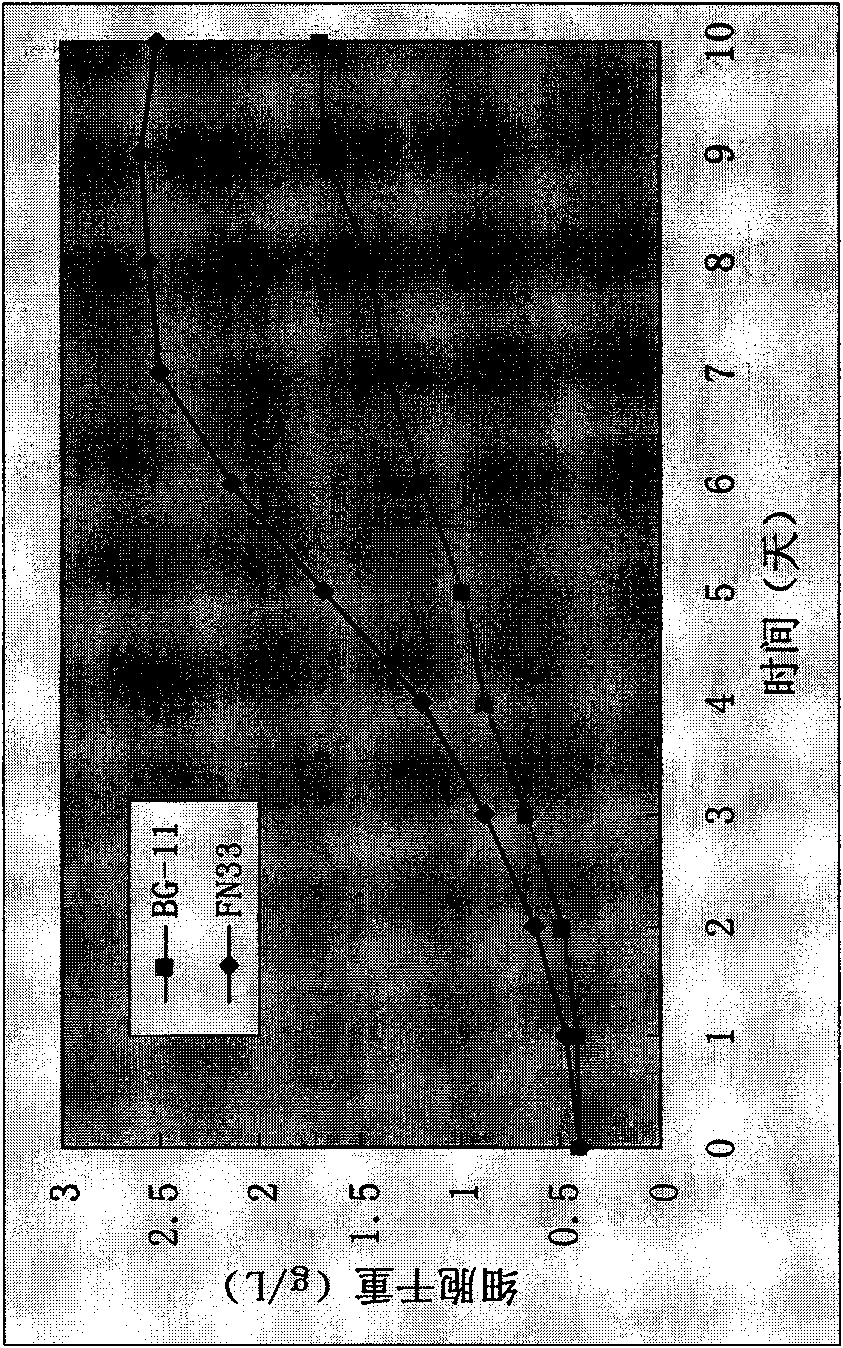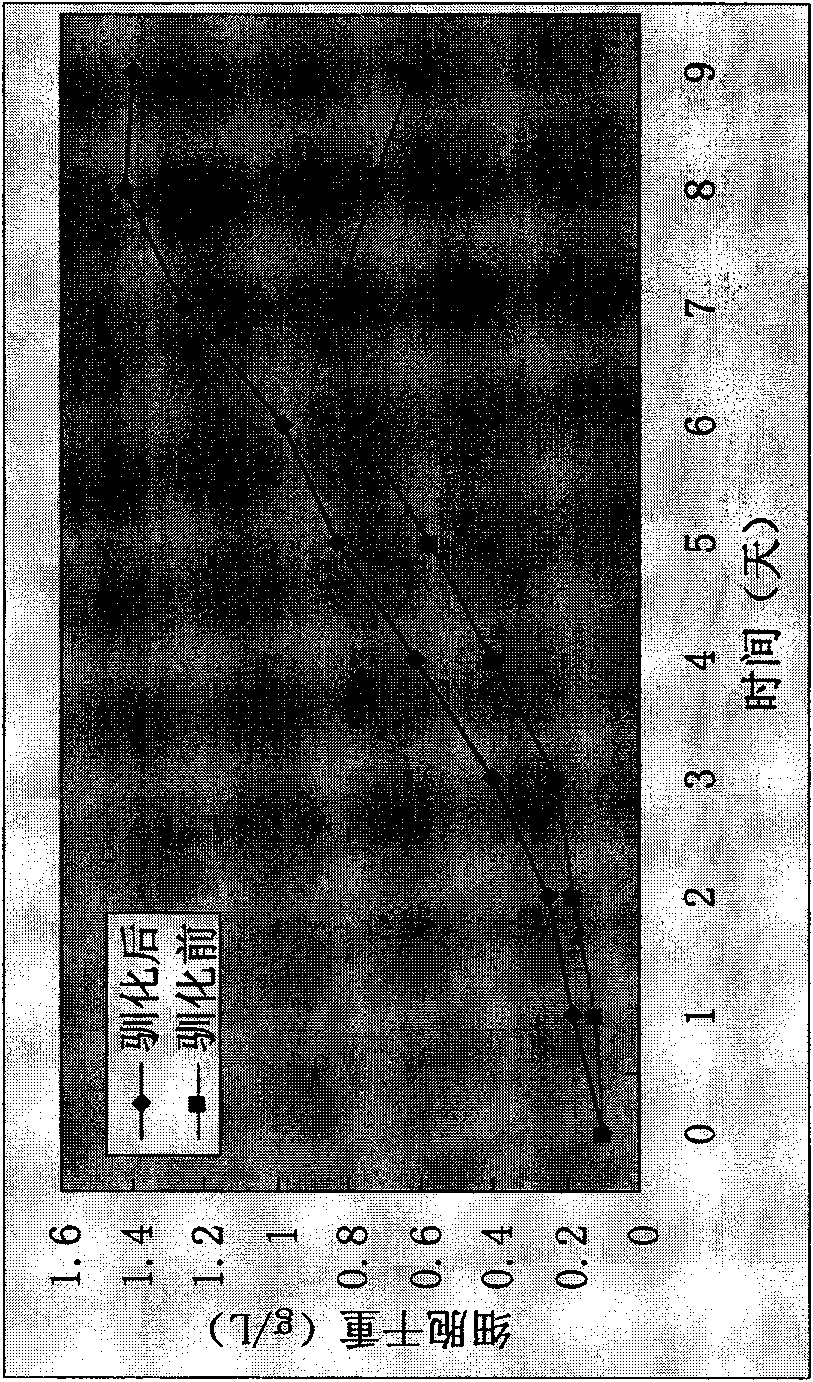Domestication method for microcoleus vaginatus and application thereof
The invention relates to a technology for the preparation method of microcystis, which is applied to the domestication of microcystis and its application field, which can solve the problems of lack of soil nutrients, large material and financial resources, high treatment costs, and the like, so as to solve the problems of soil salinization and increase in fertility. , the effect of increasing the biomass of microalgae
- Summary
- Abstract
- Description
- Claims
- Application Information
AI Technical Summary
Problems solved by technology
Method used
Image
Examples
Embodiment 1
[0057] Embodiment 1: process the saline-alkali area along the coast of Yingkou, Liaoning
[0058] step 1:
[0059] 1. prepare the FN33 substratum of the present invention's culture Microcoleum:
[0060] Ammonium nitrate 3.0g / L Magnesium sulfate 0.04g / L
[0061] Dipotassium hydrogen phosphate 0.05g / L Calcium chloride 0.015g / L
[0062] Disodium EDTA 0.1g / L Ferric Chloride 0.002g / L
[0063] Peptone 1.0g / L Sodium Chloride 2.0g / L
[0064] Trace elements 0.5ml / L
[0065] Wherein the trace element preparation method is:
[0066] Boric acid 286mg Copper sulfate 5mg
[0067] Manganese Chloride 115mg Ammonium Molybdate 3.7mg
[0068] Zinc sulfate 12mg Add distilled water to make up to 1L
[0069] The culture conditions are: temperature 25°C, light 22,000 lux, pH: 8.0, after 7 days of culture, the dry cell weight of Nannotheca can reach up to 1.8g / L, such as figure 2 shown.
[0070] 2. The formula of BG-11 medium is as follows:
Embodiment 2
[0101] Treatment of saline-alkali areas along the coast of Yingkou, Liaoning
[0102] Step 1: Prepare the culture medium (basic medium) for cultivating Microcoleum:
[0103] Ammonium nitrate 1.0g / L Magnesium sulfate 0.05g / L
[0104] Dipotassium hydrogen phosphate 0.02g / L Calcium chloride 0.03g / L
[0105] Disodium EDTA 0.2g / L Ferric Chloride 0.003g / L
[0106] Peptone 1.2g / L Sodium Chloride 3.0g / L
[0107] Trace elements 1.0ml / L
[0108] The culture conditions are: temperature 24°C, light 20000 lux, pH: 8.5, growth cycle 8 days.
[0109] Step 2: Adaptive domestication of Microsheath according to the use of saline-alkali land:
[0110] (1) Salinity tolerance acclimatization:
[0111] Ammonium nitrate 1.0g / L Magnesium sulfate 0.05g / L
[0112] Dipotassium hydrogen phosphate 0.02g / L Calcium chloride 0.03g / L
[0113] Disodium EDTA 0.2g / L Ferric Chloride 0.003g / L
[0114] Peptone 1.2g / L Trace elements 1.0ml / L
[0115] Sodium chloride gradually increased from 6g / L to 11g / L
...
Embodiment 3
[0132] Treatment of saline-alkali areas along the coast of Yingkou, Liaoning
[0133] Step 1: Prepare the medium for cultivating Microcoleum:
[0134] Ammonium nitrate 1.4g / L Magnesium sulfate 0.02g / L
[0135] Dipotassium hydrogen phosphate 0.03g / L Calcium chloride 0.04g / L
[0136] Disodium EDTA 0.05g / L Ferric Chloride 0.005g / L
[0137] Peptone 0.8g / L Sodium Chloride 3.0g / L
[0138] Trace elements 1.5ml / L
[0139] The culture conditions are: temperature 26°C, light 28000 lux, pH: 8.5, growth cycle 8 days.
[0140] Step 2: Adaptive domestication of Microsheath according to the use of saline-alkali land:
[0141] (1). Salinity tolerance acclimatization:
[0142] Ammonium nitrate 1.4g / L Magnesium sulfate 0.02g / L
[0143] Dipotassium hydrogen phosphate 0.03g / L Calcium chloride 0.04g / L
[0144] Disodium EDTA 0.05g / L Ferric Chloride 0.005g / L
[0145] Peptone 0.8g / L Trace elements 1.5ml
[0146] Sodium chloride gradually increased from 6 to 12g / L
[0147] After being accli...
PUM
 Login to View More
Login to View More Abstract
Description
Claims
Application Information
 Login to View More
Login to View More - R&D
- Intellectual Property
- Life Sciences
- Materials
- Tech Scout
- Unparalleled Data Quality
- Higher Quality Content
- 60% Fewer Hallucinations
Browse by: Latest US Patents, China's latest patents, Technical Efficacy Thesaurus, Application Domain, Technology Topic, Popular Technical Reports.
© 2025 PatSnap. All rights reserved.Legal|Privacy policy|Modern Slavery Act Transparency Statement|Sitemap|About US| Contact US: help@patsnap.com



